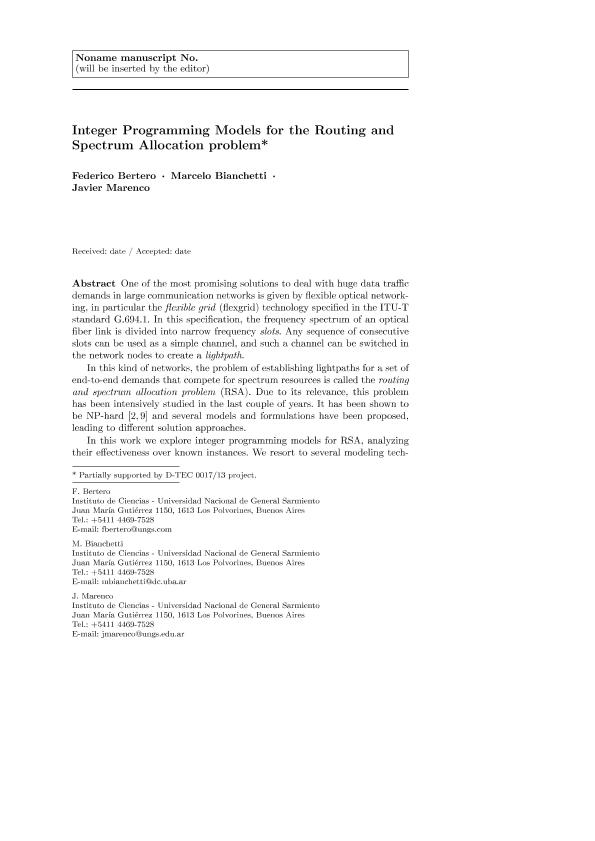Artículo
Integer programming models for the routing and spectrum allocation problem
Fecha de publicación:
10/2018
Editorial:
Springer
Revista:
Top
ISSN:
1134-5764
Idioma:
Inglés
Tipo de recurso:
Artículo publicado
Clasificación temática:
Resumen
One of the most promising solutions to deal with huge data traffic demands in large communication networks is given by flexible optical networking, in particular the flexible grid (flexgrid) technology specified in the ITU-T standard G.694.1. In this specification, the frequency spectrum of an optical fiber link is divided into narrow frequency slots. Any sequence of consecutive slots can be used as a simple channel, and such a channel can be switched in the network nodes to create a lightpath. In this kind of networks, the problem of establishing lightpaths for a set of end-to-end demands that compete for spectrum resources is called the routing and spectrum allocation problem (RSA). Due to its relevance, this problem has been intensively studied in the last couple of years. It has been shown to be NP-hard (Christodoulopoulos et al. in IEEE J Lightw Technol 29(9):1354–1366, 2011; Wang et al. in IEEE J Opt Commun Netw 4(11):906–917, 2012) and several models and formulations have been proposed, leading to different solution approaches. In this work, we explore integer programming models for RSA, analyzing their effectiveness over known instances. We resort to several modeling techniques, to find natural formulations of this problem. Since integer programming techniques are known to provide successful practical approaches for several combinatorial optimization problems, the aim of this work is to explore a similar approach for RSA.
Archivos asociados
Licencia
Identificadores
Colecciones
Articulos(SEDE CENTRAL)
Articulos de SEDE CENTRAL
Articulos de SEDE CENTRAL
Citación
Bertero, Federico Alberto; Bianchetti, Marcelo; Marenco, Javier Leonardo; Integer programming models for the routing and spectrum allocation problem; Springer; Top; 26; 3; 10-2018; 465-488
Compartir
Altmétricas




